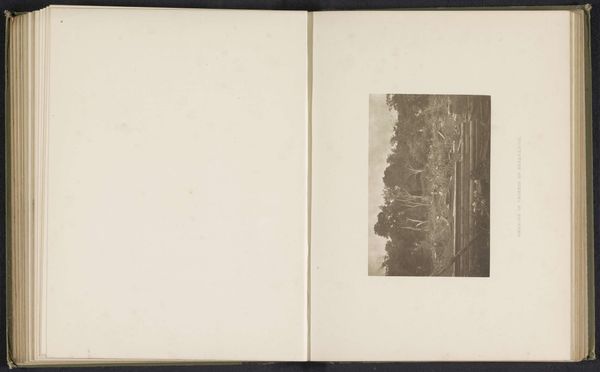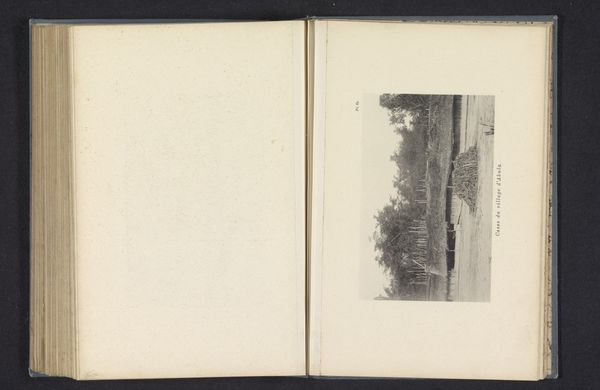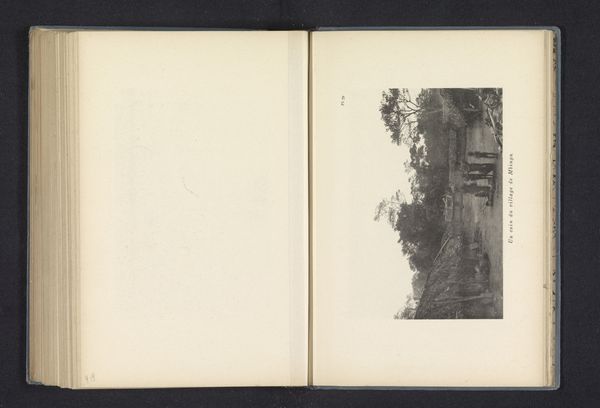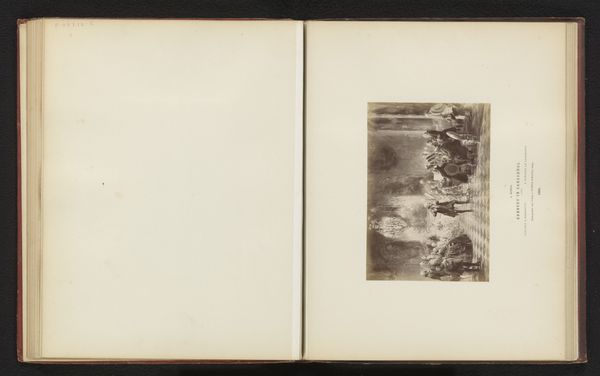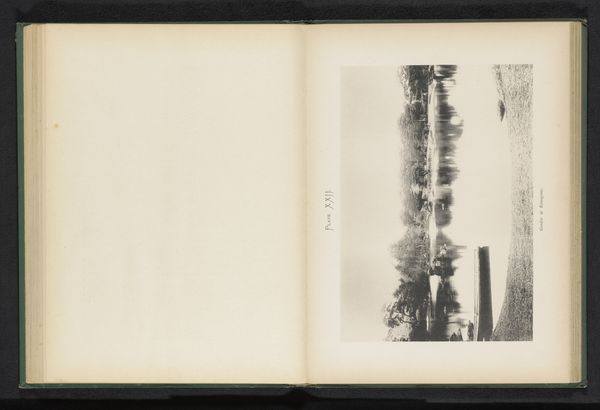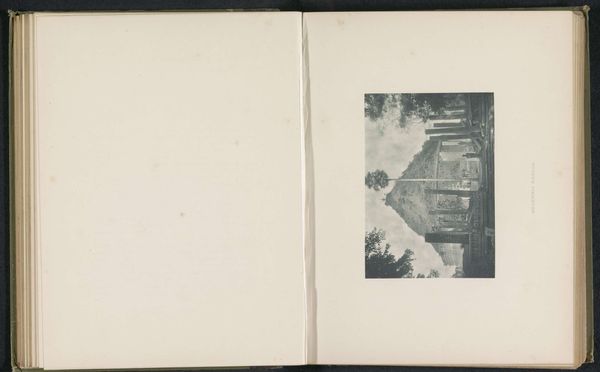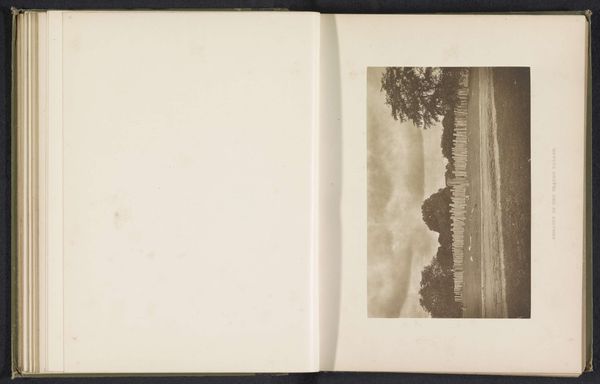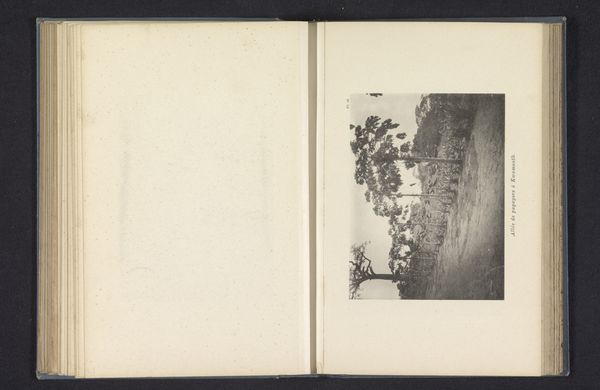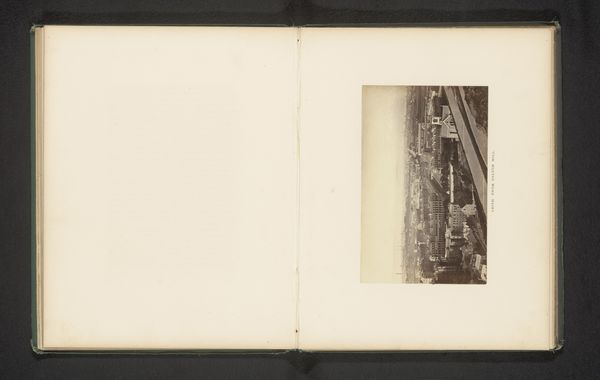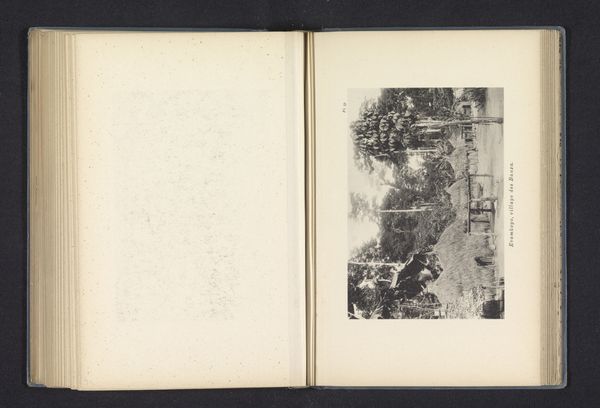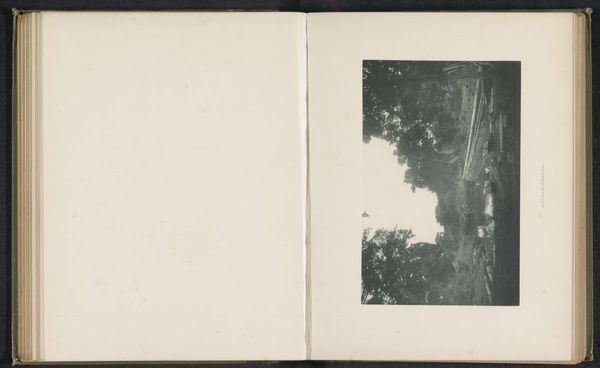
print, photography, site-specific, albumen-print
#
aged paper
#
homemade paper
#
ink paper printed
# print
#
sketch book
#
hand drawn type
#
landscape
#
photography
#
personal sketchbook
#
hand-drawn typeface
#
site-specific
#
ink colored
#
sketchbook drawing
#
sketchbook art
#
albumen-print
Dimensions: height 125 mm, width 193 mm
Copyright: Rijks Museum: Open Domain
Curator: This is “Pokuna,” an albumen print from 1896 by Henry William Cave. It is part of a sketchbook and showcases a site-specific landscape. Editor: There’s a haunting quality to it. The sepia tone lends a somber, almost melancholic air. The composition itself is quite stark. Curator: Indeed. Cave's photography offers valuable insights into colonial-era Ceylon through the lens of tourism and documentation. This albumen print, adhered to a page in a sketchbook, wasn't merely about capturing a scene but creating a tangible artifact for consumption. Editor: Look at the texture of the aged paper. You can almost feel the passage of time and its impact on the object itself. Notice the tonality; how the light catches the architecture juxtaposed with the surrounding landscape. It is clear he understood formal artistic concepts. Curator: Cave, an entrepreneur and photographer, ran a successful studio catering to European travelers. “Pokuna” reflects the orientalist gaze prevalent at the time. The photograph was created using albumen, a medium requiring careful labor in its preparation and printing, and the materiality underscores the process of constructing images of Ceylon for a specific market. Editor: I disagree that his work is a straightforward example of Orientalism. See the geometric pattern play; the contrast of linear architecture and organic forms of the tree. I'm also interested in what he omits, where the edges fall, and what it does not capture. Curator: It would be worth further research into how the images like “Pokuna” circulated and were used, in order to understand the cultural dialogue surrounding it. What labor relations were present during its creation, what socio-economic realities made Cave’s photography enterprise possible? Editor: Well, for me it's the quiet, timeless feel captured. It's not simply a colonial snapshot; it's a sophisticated piece, both in subject matter and execution, inviting repeated close looking and visual study. Curator: It highlights how photographic practices became intertwined with colonial economies, capturing not just places, but also the power dynamics inherent in their representation and distribution. Editor: Yes, and I find it incredibly impressive what an impactful piece of work he made, manipulating his subject masterfully.
Comments
No comments
Be the first to comment and join the conversation on the ultimate creative platform.
